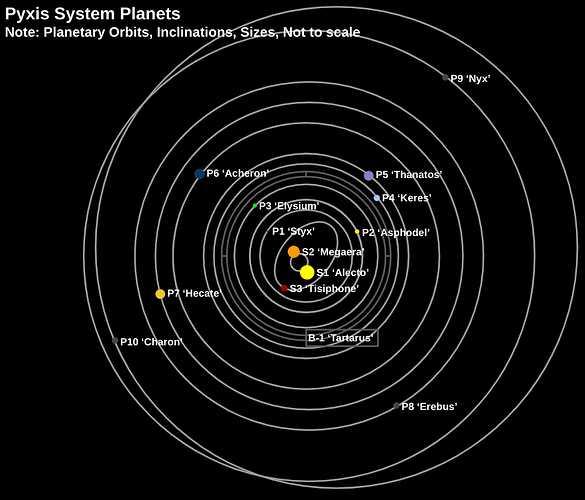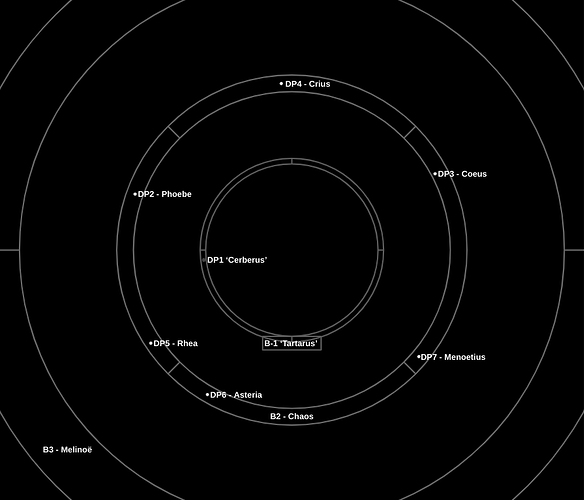// NAV The Starlight Shadow | CVL-1
// Vicinity of Lachesis Station
// December 29th, 2109
// Flight Deck
The I/D-239 Icarus touches down and magnetizes to the flight pad before being shuttled down. Below, the sounds of footsteps, engines and machinery can be heard as the flight pad is repressurized. On the other side of the pressure hatch, one of the flight bosses signals the Icarus to move towards him, leading it to a strikedown station where flighthands replace the ablative paneling on the strike craft’s exoskeleton. A few minutes later, the strike craft returns to the hangar, ready for the next mission.
Lore: Carriers
July 14th, 2056
The advent of space warfare in the 2050s led many to think about how ‘modern’ concepts of war on Elysium could apply to the void. One such idea was the Aircraft Carrier, a ship designed to launch aircraft off ships. Designs were rough at first, with many designs competing for the place of making space carrier warfare viable in the 21st century. The leading design that eventually won out was the ‘Flight Pad’ design due to the many challenges involving pressure locks and spacing restrictions. Some larger ships can carry strike craft, but most times the carrier is the primary ship involved in the flight chain.
Carriers divide into four primary types, being tender, light, escort, and fleet. Each one has a different role and does different jobs.
Craft Tender
Relative Size Class - Frigate/Destroyer
Craft Tenders are the ultralights of carriers and most ships. They carry around 2-4 strike craft externally, the nicer ones have small internal hangars so they don’t get nicked by stray dust or the occasional micrometeorite, but are purely unpressurized. Craft Tenders can have less than twenty people onboard, including pilots, damage control and engineering. Craft Tenders get a bad rep amongst Spacers due to the nonexistent armor and lack of… Everything? No Point Defense, no automated countermeasure dispenser, and most don’t have chem-bal guns. However, these ships are excellent at screening for loiters munitions for small fleets that can’t afford a big carrier.
Escort Carrier
Relative Size Class - Destroyer/Light Cruiser
Escort Carriers find the middle ground between ‘cheap’ and ‘good’. They carry upwards of 20 strike craft in pressurized internal hangars that by most conventional standards, are fairly big. Alongside their strike capability, some pack the occasional chem-bal gun or a VLS. In terms of armor, these ships are lightly armored, being able to shrug off your typical chem-bals, but not take much from larger systems. You can pack maybe 100 people onto an escort carrier, make it 200 if you convert it into a dedicated troop transport. Escort Carriers are the direct upgrade from the Craft Tender, being a great screening tool for its cost. Additionally, a fleet of escort carriers nearly sunk the entire Tempest Securities Corporation’s* fleet at dock and damaged the station beyond repair.
*See Battle of Cyclone Station for more details
Light Carriers
Relative Size Class - Heavy Cruiser/Battlecruiser
Light Carriers are a step up from Escort Carriers, often carrying upwards of 50 strike craft, in pressurized internal hangars. These ships are often found in the middle group of fleets, needing the protections of strike craft, needing more than an escort carrier, but being unable to afford a Fleet Carrier. These ships are fairly fast, and lightly armed. You fit 250 people on here, 500 if you convert it to a troop transport.
Fleet Carrier
Relative Size Class - Own Size Class
The Queen of the Void, the Fleet Carrier puts the Battleship to shame in size. Carrying upwards of 125 strike craft, these ships are often the only of their pattern, cost a lot, and if damaged, will cost a fortune to fix. They are heavily armed, have heavy armor, and centerpieces of entire fleets. Most even have dedicated compartments for troop transportation, and plenty of room for other support systems. You fit 500 people onto a Fleet Carrier, 2500 if you convert it.



